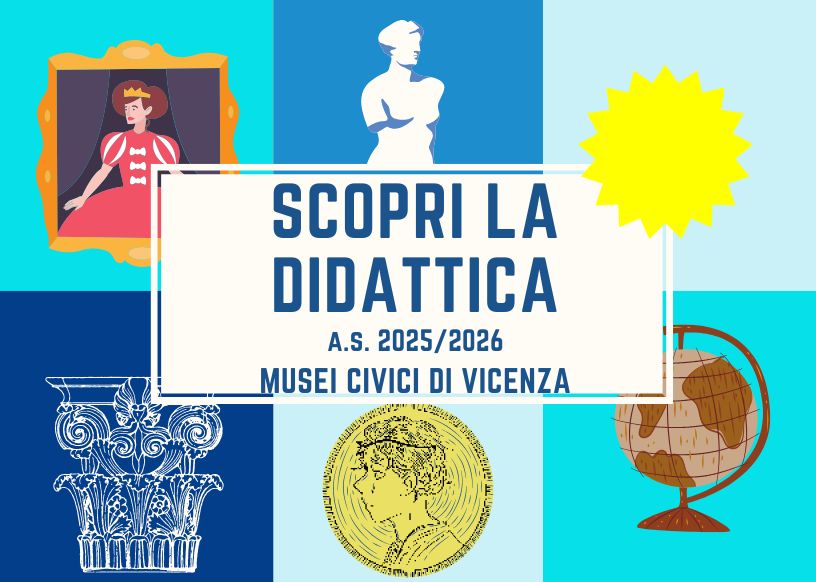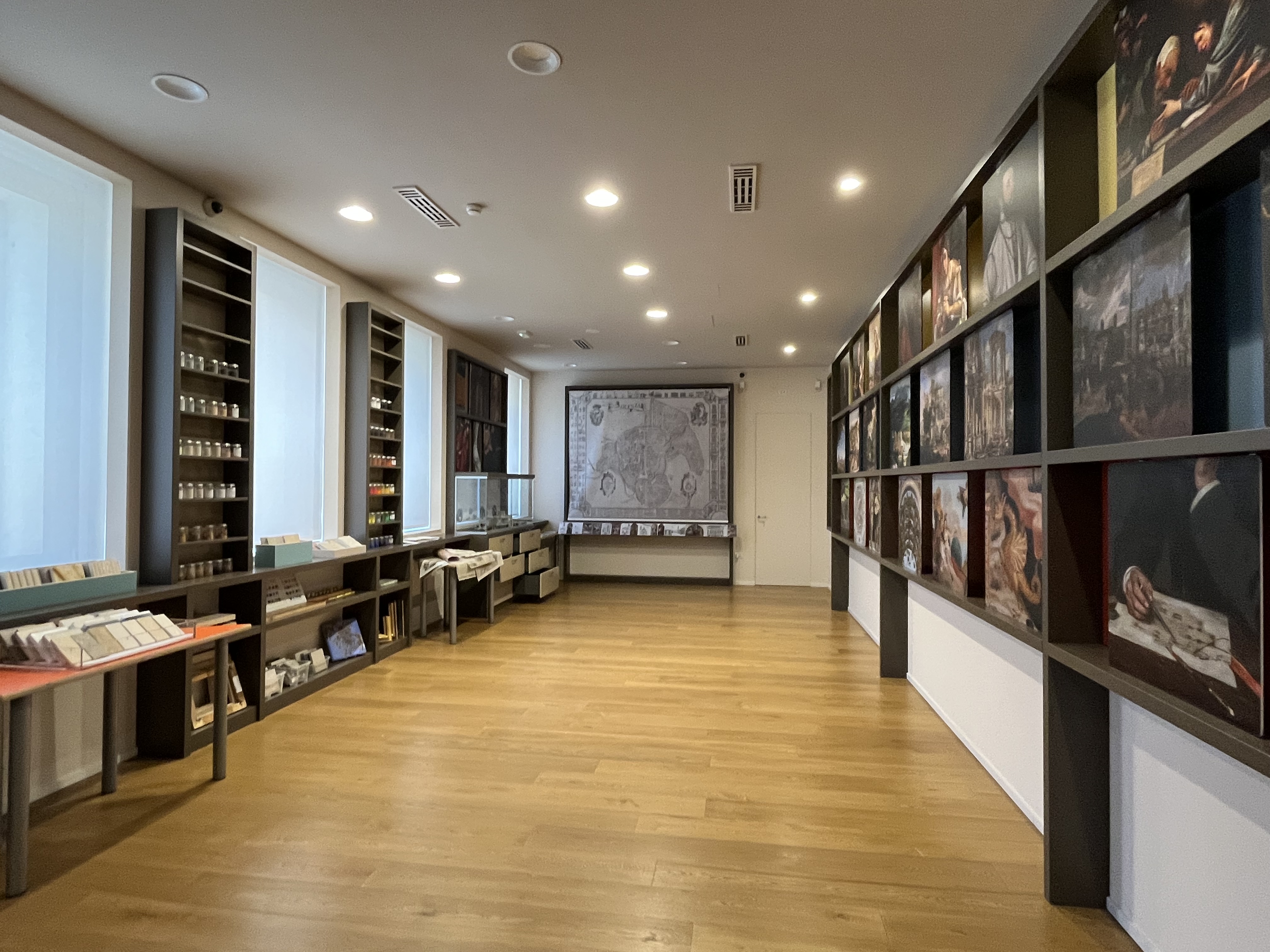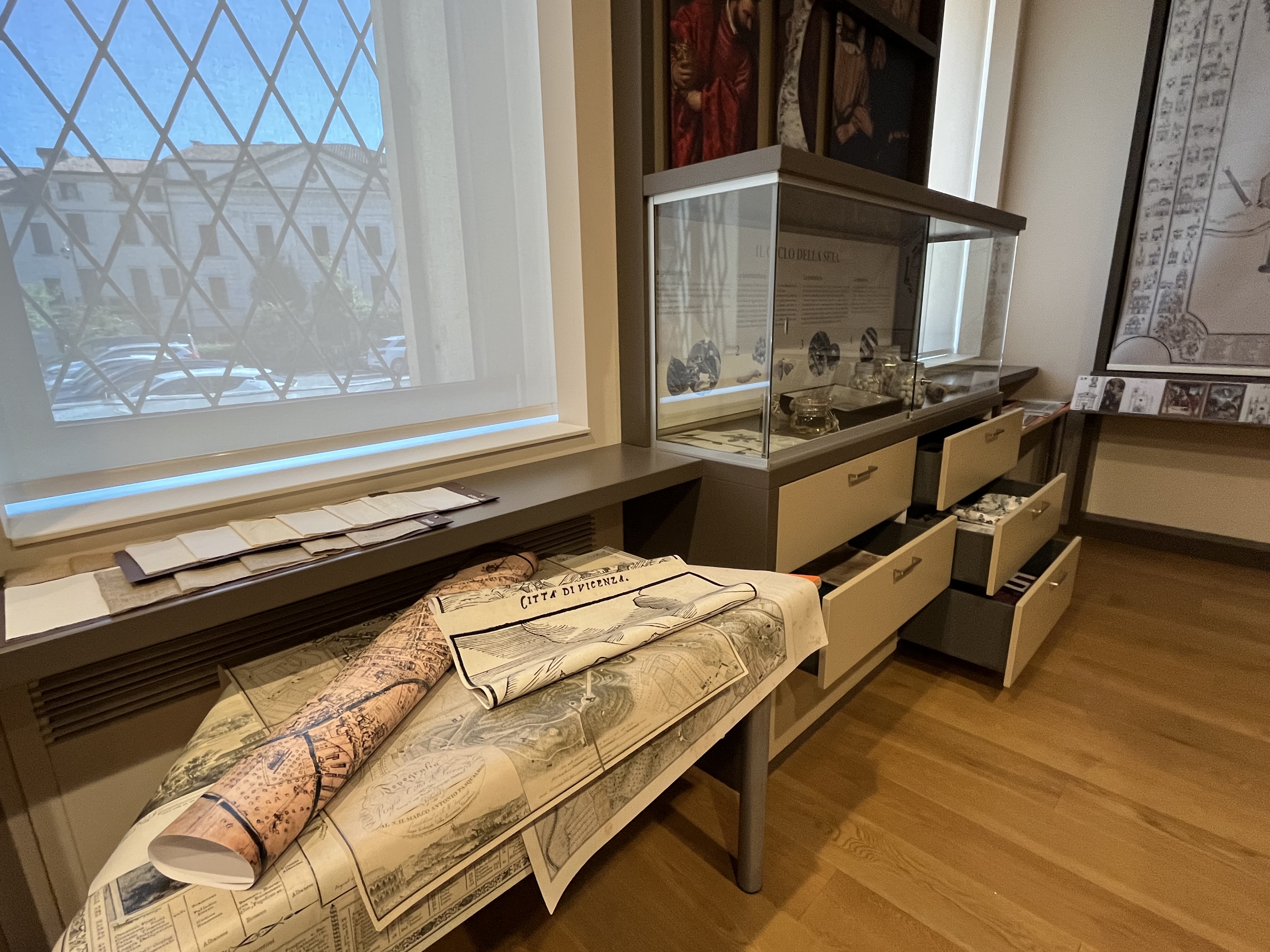Educational Activities

We are pleased to bring the educational program for schools to your classrooms.
For the next three years, the Scatola Cultura cooperative will be responsible for promoting and implementing in Musei Civici di Vicenza a rich program of workshops for schools at any level.
The activities are designed to support and enrich school programs, providing educational tools that allow young people to explore key topics in a dynamic way, in a unique and stimulating context. We offer a variety of itineraries, workshops and visits accompanied by experts with specific skills.
Here are our proposals!
Educational program
Scatola Cultura will always be available for any need or information: write to didattica.museivicenza@scatolacultura.it or call the number 320 456 6228.
On request, “tailor-made” educational projects can be developed.
Wishing a good school year to everyone!
The New Educational Laboratory of the Civic Museum at Palazzo Chiericati

On Tuesday, October 7, 2024, the renovated educational room—now called the Educational Laboratory —was inaugurated, in line with the guidelines of the International Council of Museums (ICOM). This is an inclusive and welcoming space, accessible and hands-on, innovative, technological and digital, and multi-sensory. In addition to educational activities, it also hosts training courses, workshops, and specialized initiatives in collaboration with universities as well as with the worlds of craftsmanship and business.
On the west wall: the visual section, a structured grid of shelves displays color photographic reproductions of details from artworks in the museum, selected according to three different thematic-educational paths: “People and Gazes – The Illustrious Citizens of Vicenza” (a selection of faces, figures, and key individuals connected to the history of the city, the region, and the museum, as represented in works from the civic collections); “Places – Architecture and Landscapes of Vicenza” (a selection of depictions of the city, buildings, and landscapes—among the most significant in paintings—with particular focus on Palazzo Chiericati, the Basilica Palladiana, the Sanctuary of Monte Berico, city gates, walls, and more); “Symbols of Art” (a selection of objects, attributes, and iconographically meaningful details—those with the greatest expressive and evocative power—designed to introduce visitors to the basics of iconographic and iconological literacy and to symbolic-allegorical thinking).
The east wall: the artistic techniques section is conceived as a tactile and multi-sensory area dedicated to artistic methods and materials. It features shelves, display cases, and drawers containing samples, stratigraphies, and materials that explore the physicality of art, encouraging tactile exploration, manual skills, and material recognition. The section—enriched with pigments, binders, gums, waxes, frames, canvases of various weaves, and paper and parchment supports—benefited from the technical contribution of Engim – Professioni del Restauro, which provided models and samples to help visitors understand a variety of artistic techniques, from marmorino plasterwork to gold leaf application and canvas preparation for painting. The lithography section is particularly rich, thanks to the contribution of Grassi Pietre, while the focus on printmaking techniques was made possible through the support of Stamperia Busato. Of special note is the textile section, which connects to the recently inaugurated Marasca Section in the new Roi Wing of the Museum. A display case dedicated to the silk production cycle was created in collaboration with the Naturalistic and Archaeological Museum, Esapolis, and the Museum of Silk and Brickwork Art in Malo, emphasizing Vicenza’s centuries-old tradition in silk production and trade. The section has also been enhanced by the contribution of twenty fine fabrics from the Rubelli Company of Venice, provided through the technical-scientific mediation of its Foundation—allowing children and young people to physically touch and examine these fabrics to understand their craftsmanship.
The south and north walls serve functional purposes. The south wall features an interactive whiteboard (LIM) and a retractable reproduction of Giandomenico Dall’Acqua’s 1711 map of Vicenza. The north wall includes wardrobe cabinets and storage for educational materials.

The new design was conceived by architect Emilio Alberti and professor Mauro Zocchetta, based on a concept by the Museum Office. It was realized thanks to the generous support of the Giuseppe Roi Foundation, a philanthropic organization, Agsm Aim Energia Spa, and numerous institutions that contributed through technical sponsorships.
* Automatic English translation

